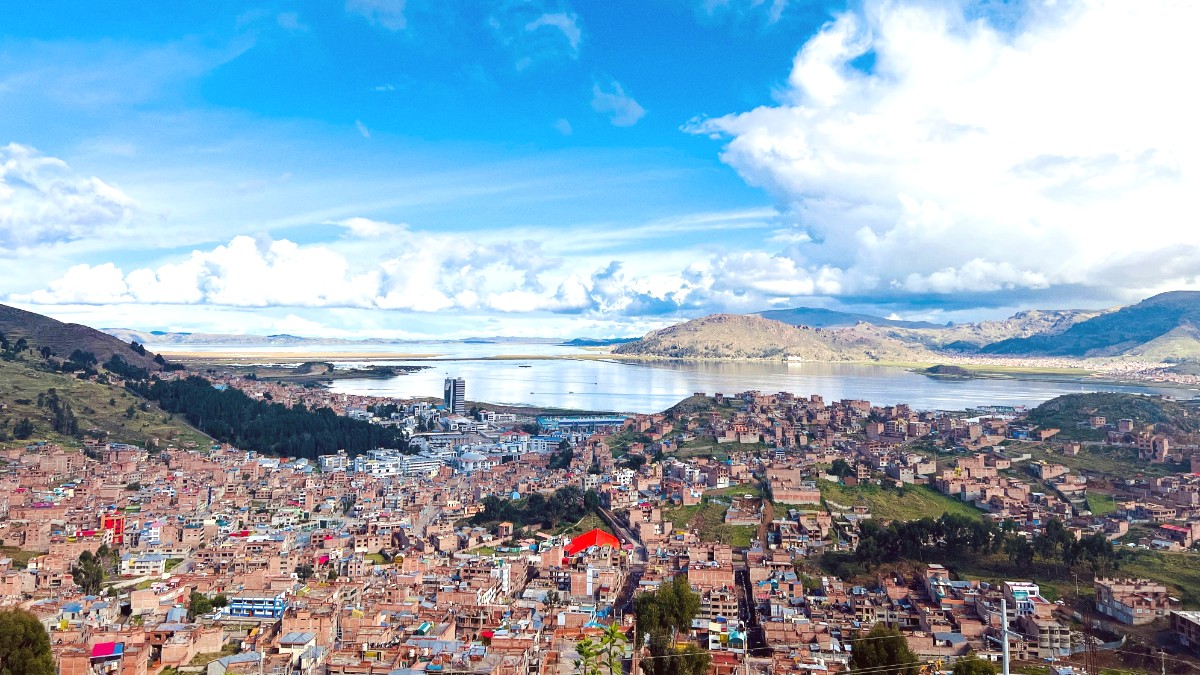
Lake Titicaca, Peru
The nearest airport to Puno is Inca Manco Cápac International Airport (JUL), located in Juliaca, approximately 45-60 minutes by road from Puno city center.
Juliaca (JUL) is a small airport with basic facilities. You will find a few shops and cafes. ATMs are available. Wi-Fi may have limits.
Flights are available year-round. Prices typically elevate during high season (June-August) and major festivals. Booking 2-3 months ahead often results in better fares.
Check Dollar Flight Club for flight deals. Compare prices on platforms like Skyscanner for best options.
No specific exit fees or taxes are typically charged upon departure from Peru for tourists. Airport departure taxes generally have inclusion in your air ticket price.
Puno serves as a common gateway to Bolivia via the Desaguadero or Kasani border crossings. Kasani (near Copacabana) is more tourist-friendly. You will need your passport and potentially a visa for Bolivia.
Self-driving in Peru is uncommon for tourists and generally not recommended for Puno. Aggressive driving and poorly lit roads pose concerns.
Roads to and from Puno are generally good for major routes. Avoid driving at night due to poor lighting and livestock. Wet season may bring localized flooding.
Arrive at Juliaca Airport at least 1.5-2 hours prior to domestic flights; check-in procedures often progress swiftly. For the bus terminal, arrive at least 30-45 minutes before scheduled departure. For the train station, arrive at least 30 minutes before departure. For lake tours, arrive at the port or meeting point at the designated time, usually 15-30 minutes before boat departure.
Juliaca Airport (JUL) offers basic waiting areas, a few small shops, and cafes. The Puno Bus Terminal provides waiting areas, basic eateries, and small shops. The Puno Train Station offers a waiting area and some facilities; it maintains well.
Car rental services in Puno are very limited. General recommendation avoids this for tourists due to challenging driving conditions and the availability of affordable public transport and tours.
Motorcycle and scooter rentals are not commonly available for tourists. No formal bicycle sharing programs exist, and Puno's hilly terrain and traffic shape cycling within the city into a challenge.
Puno's location on an inland lake means traditional sea or river arrivals are not applicable for international travel.
Immigration procedures at seaports are not applicable to Puno as it sits on a lake, not a seaport.
Dollar Flight Club and Skyscanner help in finding best airfares.
For car rental outside Puno, check options on DiscoverCars.com.
Puno's public transportation system is mainly informal but efficient for local travel. The main public transport presents `colectivos` (shared vans or minibuses) and local buses. These vehicles operate on set routes, shaping them into a budget-friendly way to move around.
Puno's city center, especially around Plaza de Armas, Calle Lima (pedestrian street), and the Malecon, is very pedestrian-friendly and enjoyable for walking.
Licensed taxis typically display a "TAXI" sign. Hail them on the street. Always agree on the fare BEFORE getting in, as meters are not in use.
Short rides within the city center cost S/. 5-8. Longer rides to the bus terminal or port cost S/. 8-10. Payment is cash (Peruvian Sol) only.
InDrive has presence in Puno and might offer slightly better prices. Uber has less presence compared to larger cities. Always confirm driver and vehicle match app details.
Public transportation in Puno generally lacks accessibility for travelers with mobility challenges. Streets can be uneven, and sidewalks narrow. Travelers with mobility needs plan accordingly, possibly arranging private transport.